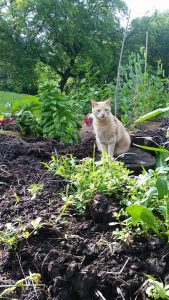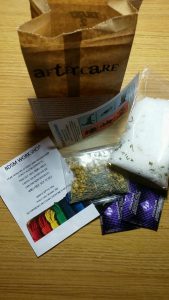Update!
I didn’t do much this week. Well, okay, I finished my paper, confirmed my plans for spring quarter, and participated in organizing a rad BDSM workshop and hosted a breakout session about healing. Life is good.
Before I started writing my paper, I had an intense moment of understanding where I realized how arbitrary writing a research paper actually is. This wasn’t a great way to start. I realized how little I wanted to write this paper and how much I wanted to create art and writing in a different medium than what I had assigned myself.
Eighteen pages later, the paper was completed! I am joyous to have discovered what mediums I truly want to work with, and despite how arbitrary everything felt, I am still content that I decided to write it.
I didn’t write an abstract, but here is my conclusion:
This paper has highlighted the significance of alternative food movements in the context of the academic study of the organization of social movements. My final argument is for the implementation of community gardens in urban neighborhood to be considered their own social movement. The group work aspect of community gardens is a mode for identity validation and community building through healing. Activists working in community gardens develop centers of support within their neighborhood and the garden itself works as an outlet for expression and relief. Gardens provide economic support by supplementing produce for the households that have participants working in the garden as well as providing education opportunities for community members. In the scope of alternative food justice, community gardens fit into a cultural ecology that overlaps with other food-related social movements. Collectives that produce CSAs, the international Slow Food Movement, farmers markets, and campaigns for slow food all encompass similar values, yet meet people in different ways. Area in which some movements fail, such as economic accessibility, are met with alternatives through other movements. Specifically, community gardens provide centralized spaces of community healing, act as a place-making marker, provide supplement food for families without cost, and uplift people who identify with oppressed groups. In the context of the current administration in the United States, the people who primarily work in gardens, women, immigrants, community elders, people of color, and school-aged children, have the opportunity to build and strengthen their communities through collective gardening action as progressive action against their own oppression. Community gardens work in ways that the Slow Food Movement has not. Although not completely ineffective, the Slow Food movement is perceived as being inaccessible for anyone who does not qualify as middle class and white. Community gardens on the other hand are seen as less elitist and more inclusionary than the Slow Food movement because of the more intimate scope of impact that community gardens have. The anti-authoritarian structure of gardening is also what makes it an approachable movement. With nonhierarchical structures and grass roots leadership that is in the control of minority groups, community gardening can be more effective for local communities than international movements. The similarity in ideologies may be similar, but the scope of the movement is what qualifies it as being more efficient than another.

On Wednesday, I went to the academic fair to speak to Dave and confirm that he received my online application for POF that I had sent in on Monday. Looks like I will officially be a part of POF for this next season- great!

Since the beginning of February, I have been organizing a BDSM workshop with four of my friends/coworkers. On Friday, we hosted the workshop with Allena Gabosch, sex activist, and over 150 people attended! We were absolutely high over the overwhelming turn out. During the workshop, we had a couple of breakout sessions. I hosted the session about aftercare and healing. I provided eight different dried herbs and had a couple of different activities that people could participate in and make their own aftercare kit. After all the work I have been doing this quarter about healing and about community connection, this event was a perfect ending to this quarter. (Thank you to everyone who attended!)
